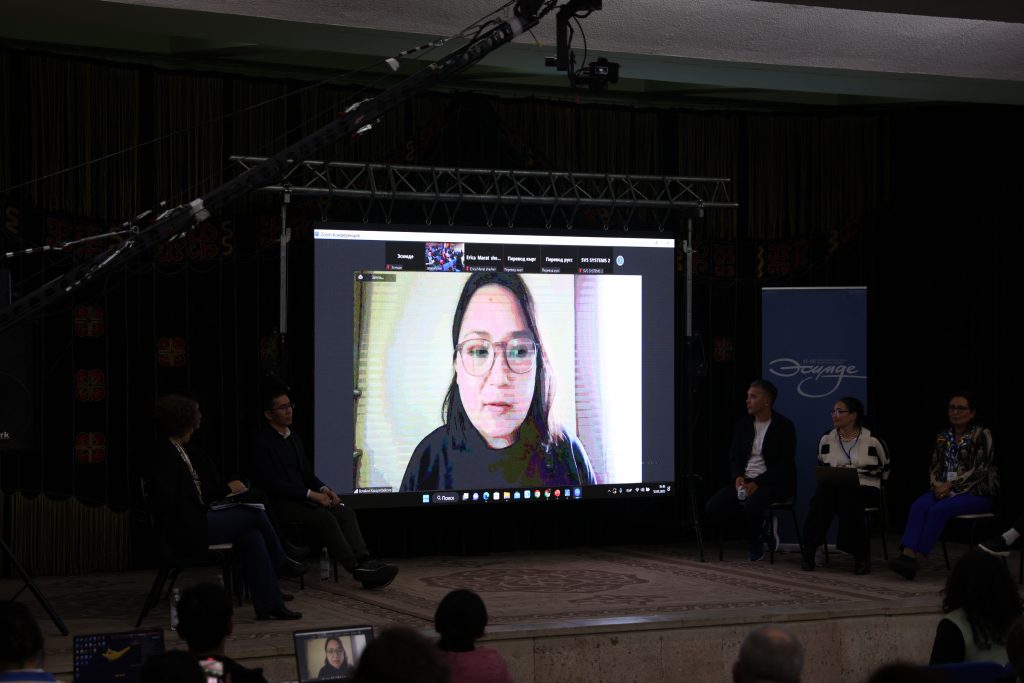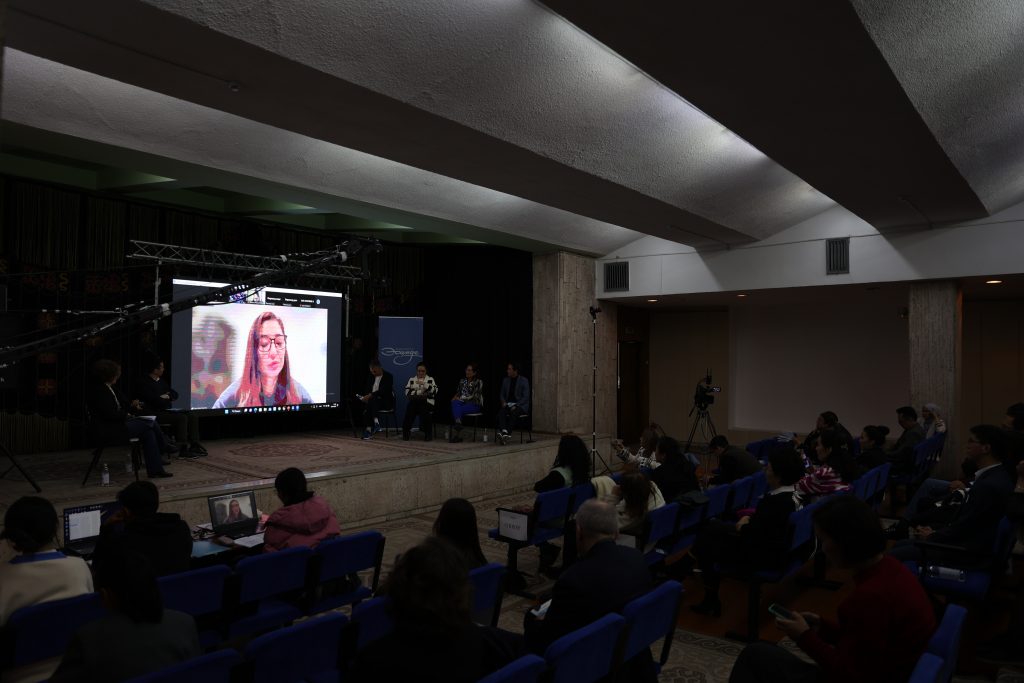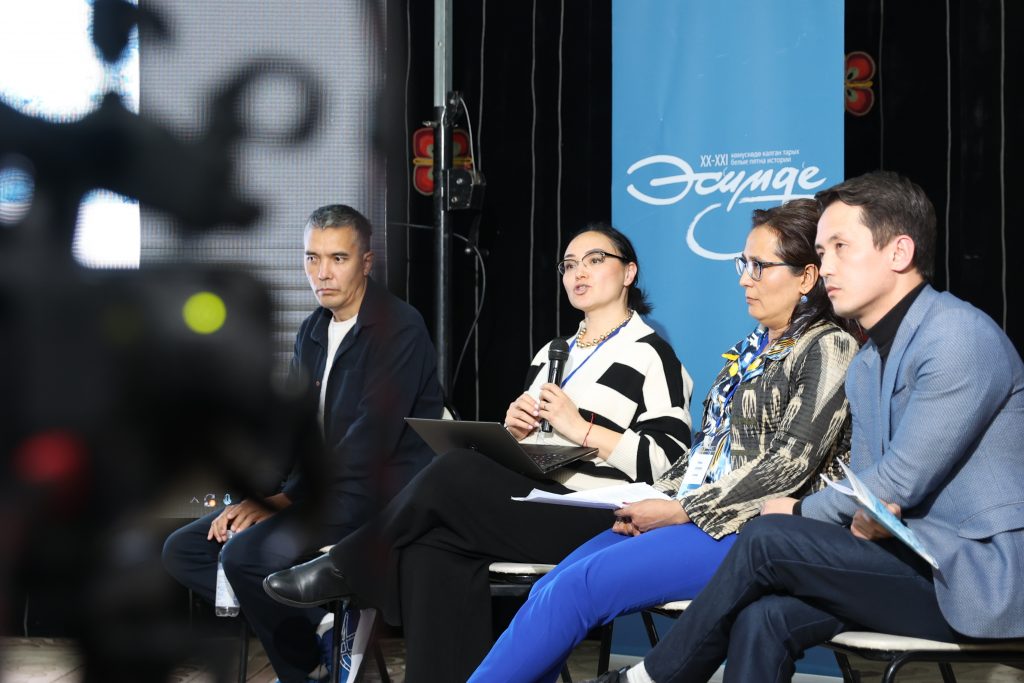Esimde research and discussion platform held the third international conference Esimde III. «On the Bridge of Memory» from 17-19 March 2023 at the Museum of Fine Arts (Bishkek, Kyrgyzstan).
The conference was accompanied by two exhibitions: «12» and «Bridges of Memory» as well as screening of the documentary film «The Kyrgyz of Chalbasy. Esimde».







The first conference «In Search of Languages of Memory» was held in 2018, the second — «Mankurt Dreams» — in 2020. The conceptual framework of the 2023 conference was the concepts of memory and decolonisation, the title — «On the Bridge of Memory».
Our aim was to create a space where voices from different locations, spheres, and positions could be heard, and come together for collective discussions, reflections on the past and the present. During three days, researchers, civic leaders and activists made presentations and participated in panel discussions.






The thematic lines were divided into six panels. The first panel, «Memory and History», posed the question of the relationship between history and memory, the formation of culture of memory and the role of society in this process.
Although the object of history and memory is the same, different emphases are often placed. In creating a culture of memory — the past itself is not as important as thoughts and values it sends to the present
Alvydas Nikzentaitis, director of the Lithuanian Institute of History
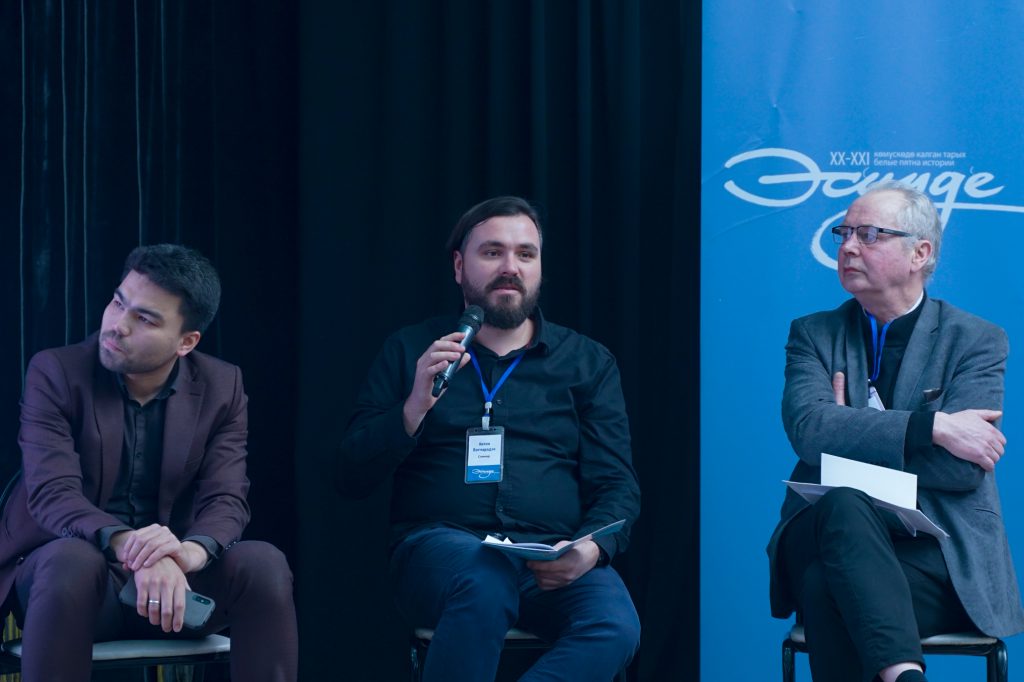
The importance of the voice of civil society organisations and its weakening in Georgia nowadays was discussed in a presentation «Strategic forgetting and contested memory between society and government in Georgia» by Anton Vatcharadze (Institute for Development of Freedom of Information (IDFI), Georgia)
Key aspects of memory today: who and how is involved in the process, who is at the centre of narratives, how they are presented — were discussed in the second panel «The Right to Memory». The report by Ayida Kubatova (Institute of History, Archaeology and Ethnology, National Academy of Sciences, Kyrgyzstan) deconstructs the myth of the formation of Kyrgyz intelligentsia only in Soviet times, revealing the closed pages of Jadidism in Kyrgyzstan in 1900-1916.
Crucial was the participation of colleagues from the Memorial International Society in the discussion on the right to memory. Jan Raczynski, Chairman of the Board of Memorial and Nobel Peace Prize laureate, spoke about access to the VchkK-NKVD-KGB archives in Russia and the need for a critical approach in their exploration. He also presented new archival documents on the repressed at the Ata Beyit (The Fathers’ Grave – Kyrg.) Memorial Complex. The controversy surrounding the lists of victims of the Soviet terror was addressed by Alexandra Polivanova, coordinator of Memorial Russia, who raised the difficult questions of who are the victims and who are the executioners? should they be listed in one list of victims? or should the list be divided, and if so, according to what principle?


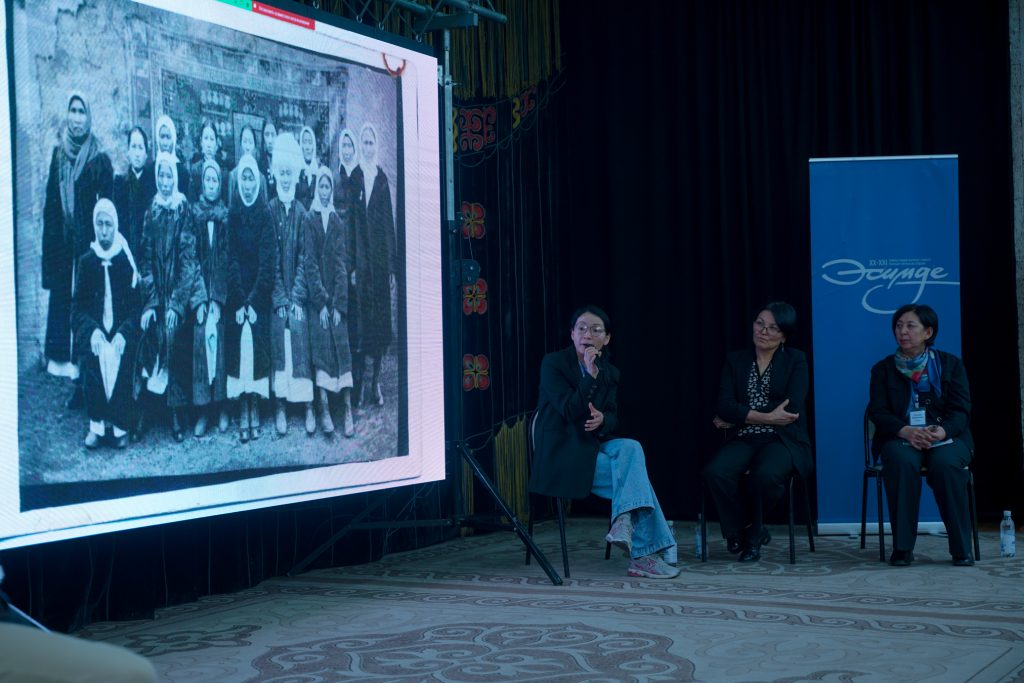
A separate section of the panel was dedicated to the memory and voices of women in the history of Kyrgyzstan: survivors of the Urkun, wives of those who were exiled and repressed in Ukraine, and Manaschi women. Memory of the researcher who made a significant discovery in the history of the city of Osh, whose work has gone unappreciated.
The third panel, «Memory Spaces», had two parts.
The section «Memory Infrastructure» showed the patterns of memory: in the urban toponymy of Frunze/Bishkek presented by Emil Nasritdinov (anthropologist, urbanist, AUCA), in the new concept of cultural landscapes by Kulshat Medeuova (Eurasian National University, Astana, Kazakhstan), the industrial history of Sulukta city told by researcher Kubanychbek Tairov (historian, Batken, Kyrgyzstan) and 1950s cemeteries in the vicinity of Bishkek seen by researcher from IFEAC Gzavier Allez. Talgat Djumashev (anthropologist, cartographer) presented his recollections of settlements left behind after the construction of the Toktogul hydropower station. The section concluded with sometimes hilarious images of Soviet nostalgia in Bishkek’s public spaces, presented by the tandem of researchers Aizhan Sharshenova (Kyrgyzstan) and Zarina Adambusinova (Kazakhstan).







The second section was dedicated to cultural institutions that play an important role in shaping collective memory. Bakhrom Irziev (Museum of the Repressed in Tashkent, Uzbekistan) presented a museum that preserves the memory of victims of political repression and plays a major role both politically (raising the political identity of the population) and research-wise (it can be considered a CIS archive owing to the information it possesses and presents). On the other hand, new forms of public spaces of memory are emerging – usually at the grassroots level, by the initiatives of individuals. Meiram Kikimbayev (Eurasian National University, Astana, Kazakhstan) spoke about how the descendants of repressed religious figures are changing the concept of the museum and turning mosques into places of interaction, remembrance, where the memory of one family can be scaled to the level of memory of the region and the country.
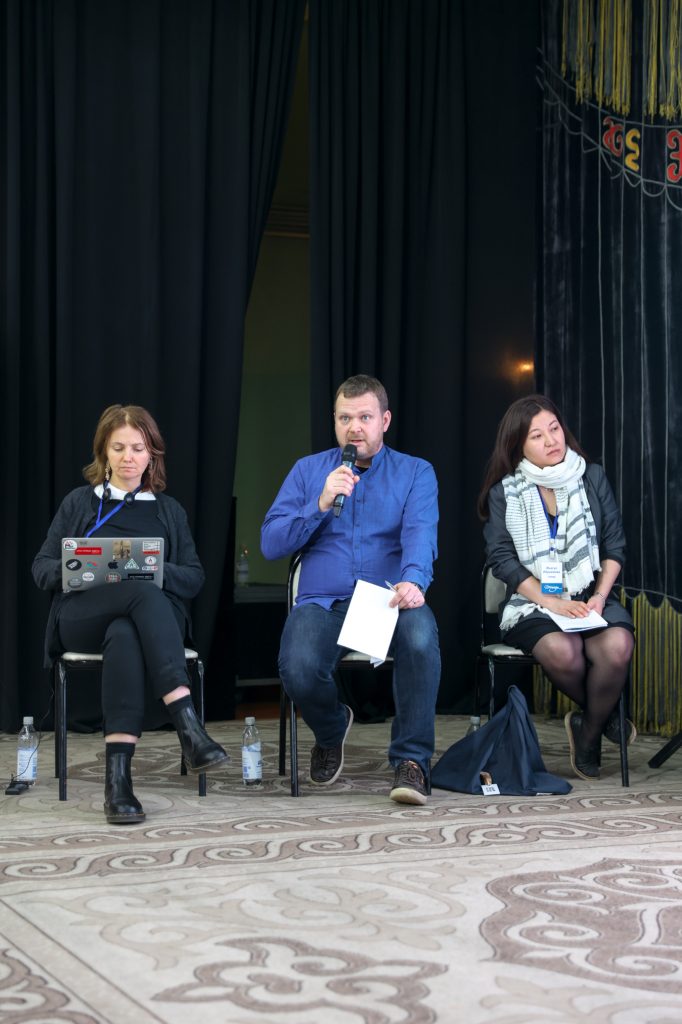
Memory activism goes hand in hand with memory studies and research, and various activist initiatives were presented in the fourth panel of the conference «Memory Activism». Štěpan Černoušek (Memorial Prague, gulag.cz) spoke about a documentary film based on research on Gulag units in Kazakhstan and Russia, and a book published because Soviet repression are not mentioned in school textbooks.
Decolonisation was the conceptual framework of the conference and memory was the main tool. The panel «Mancourt Dreams. Reflections on Post/De/Re:coloniality» united different approaches and perspectives in thinking about the past and present. Each of the presentations could well have been a separate topic of discussion. Nonetheless, bringing the different voices together was important in order to hear and see their depth and scope. The context was set by Madina Tlostanova (decolonial researcher and writer, Linköping University, Sweden) in her report «Decoloniality: Between a Traveling Concept and a Relational Onto-epistemic Political Stance». And the researcher of Kyrgyz history, Eleri Bitikchi, in his speech «Sedentarism and Soviet Historiography of the Steppe». In Bitikchi’s definition, the spectrum of the decolonisation process is broad: from the rejection of the hierarchy of knowledge and the withdrawal from ethnographic ostentatious traditionalism to the rejection of an anthropocentric worldview.


The need to revise the hierarchy of knowledge in academia was highlighted by Erica Marat (National Defence University, Washington DC, USA) and Botakoz Kassymbekova (University of Basel, Switzerland) in a talk on critical reflection on the imperial innocence of Russia, including in sciences. Rano Turaeva (Ludwig Maximilian University, Germany) contributed to the discussion, spoking about critiquing the hierarchy of knowledge in different academic institutions, including international ones.
The direct correlation of coloniality and authoritarianism of power in a political science approach was presented in a study by Asel Doolotkeldieva (visiting researcher at ZOiS, Germany) and Assel Tutumlu (University of the Middle East, Northern Cyprus).
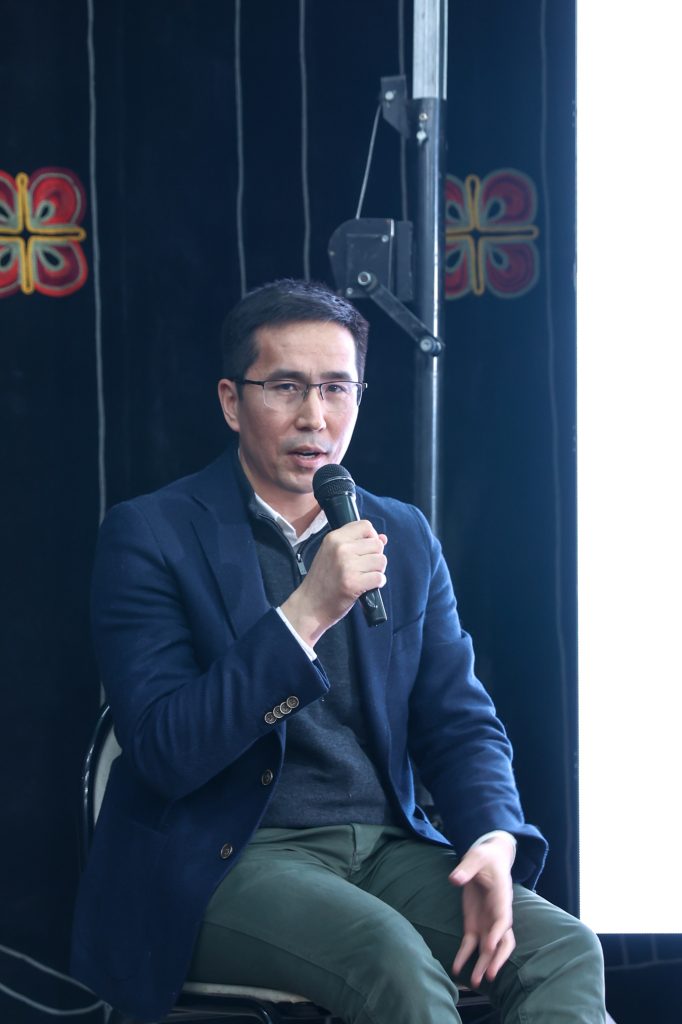
Serik Beisembayev (PaperLab Research Centre, Astana, Kazakhstan) spoke about decolonial optics in the study of everyday practices – through the presentation of research on Kazakhstani perceptions of 30 years of independence.
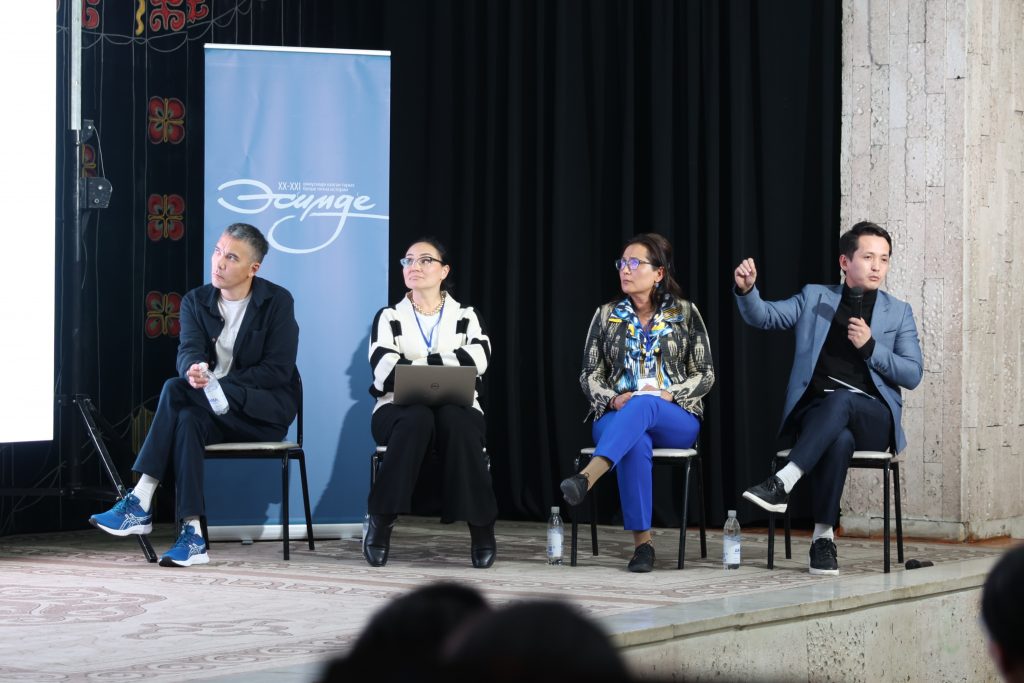
Azamat Alagoz (researcher, National Academy of Sciences, Kyrgyzstan) developed this perspective through the theme of the construction of «Kyrgyz» Islam.
The sixth panel, «Memory in Visual Reflection», continued the conversation on decolonial processes, with an emphasis on working with memory in artistic practices. The discussion began with the question of how to deal with the Soviet legacy, building a connection and consistency with it, given that the norms introduced during that period were imposed and elevated to cult. As long as existing art forms were placed within the narrow and objectifying frameworks of «traditional», «archaic», and «decorative-applied». Art historian Gamal Bokonbaev proposed a revision of visual memory of the Soviet period using the example of «Akyns» by G. Aitiev and J. Kozhakhmetov from the collection of the Museum of Fine Arts. Reflections on the antiquity of Soviet Kyrgyzstan through the works of sculptor Olga Manuilova were presented by curator Natalia Andrianova. The undiscovered artists of the Soviet period were also described by researcher Diana Uhina.
A kind of response was provided by artists and educators Gulnara Kasmalieva and Muratbek Jumaliev, about experiencing post-Soviet through art; artist Jazgul Madazimova, about finding a visual language for the experience of migration, remembrance and sense of mother, land and language; and artist Diana Rakhmanova, about works that reveal one of the most tragic and silenced memories of the Civil War in Tajikistan.


We are afraid. We are afraid of violating decency, norms, hierarchy. We are afraid to offend someone with our research. In order to remember we have to overcome the fear, not to be afraid to offend, and not to be offended ourselves
Gamal Bokonbaev, art historian
Conference guests visited the Ata-Beyit (The Fathers’ Grave – Kyrg.) Memorial Complex, where they laid flowers and paid tribute to those who were repressed in 1938. The history of Kyrgyzstan’s main memorial was told by Bolot Abdrakhmanov, now a colonel in the SCNS, thanks to whom a mass grave was opened in a suburb of Bishkek thirty years ago, and who published a ten-volume of archive materials on the repression of the Stalinist period with his own funds. Symbolically, the main figures commemorating the repression were Bolot Abdrakhmanov and Jan Raczynski.






The Esimde III. «On the Bridge of Memory» conference generated considerable interest. The year 2022 has lifted the veil of all taboos, the world has become more vulnerable, wars and memory wars have resumed, and in this context there is a public demand to understand what is happening in the world at present. Reflection during the conference gave impetus for further discussions and research.
